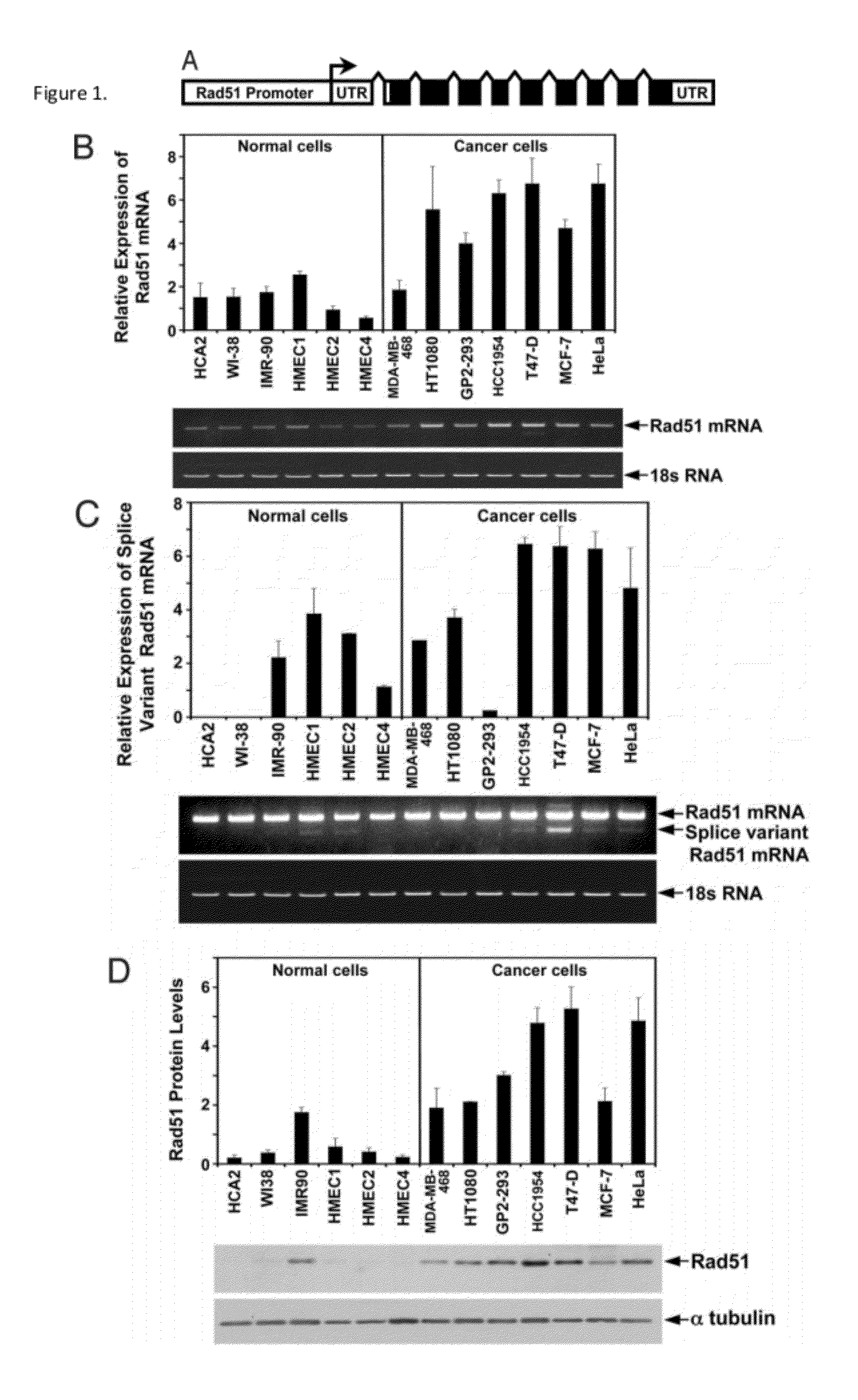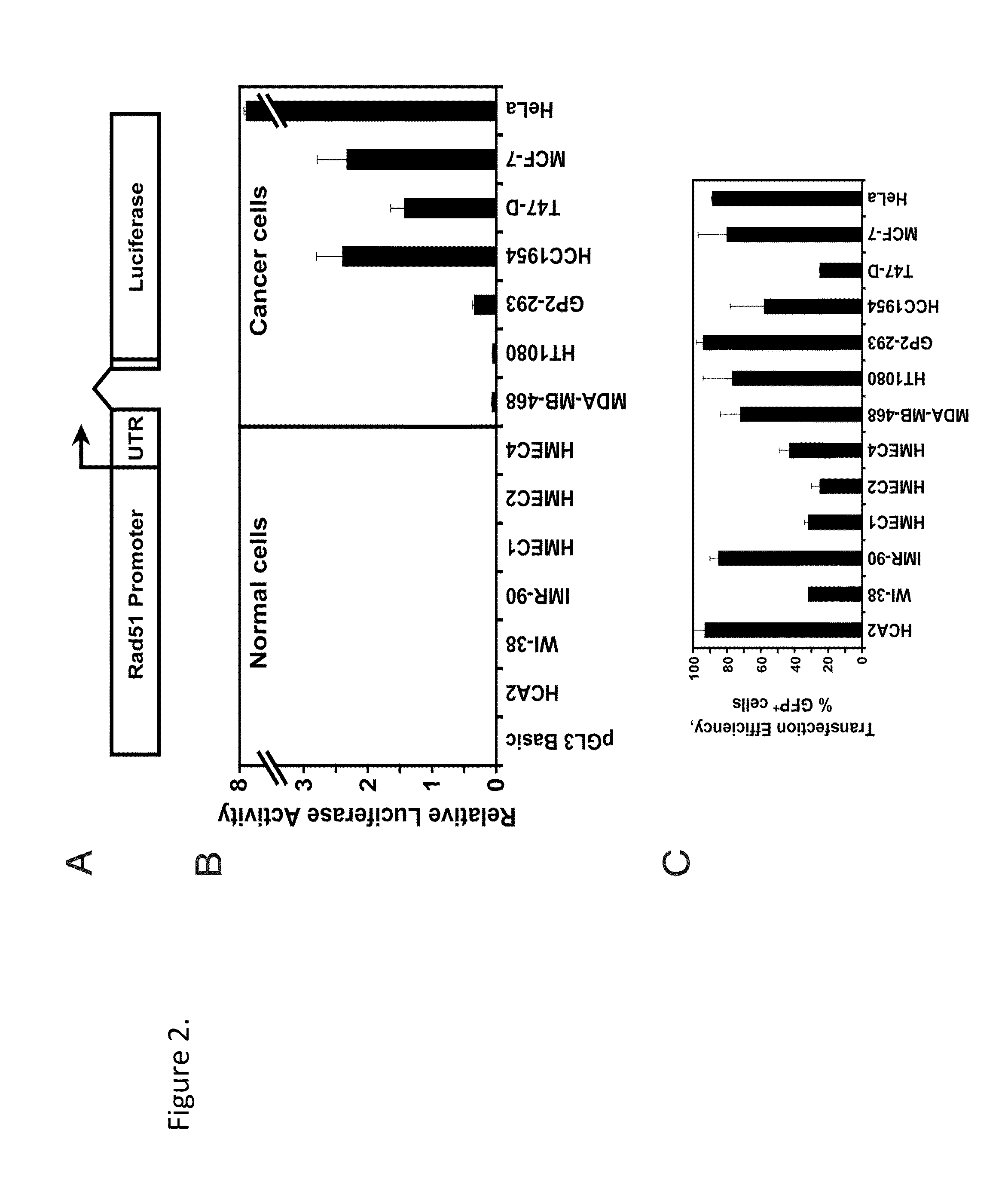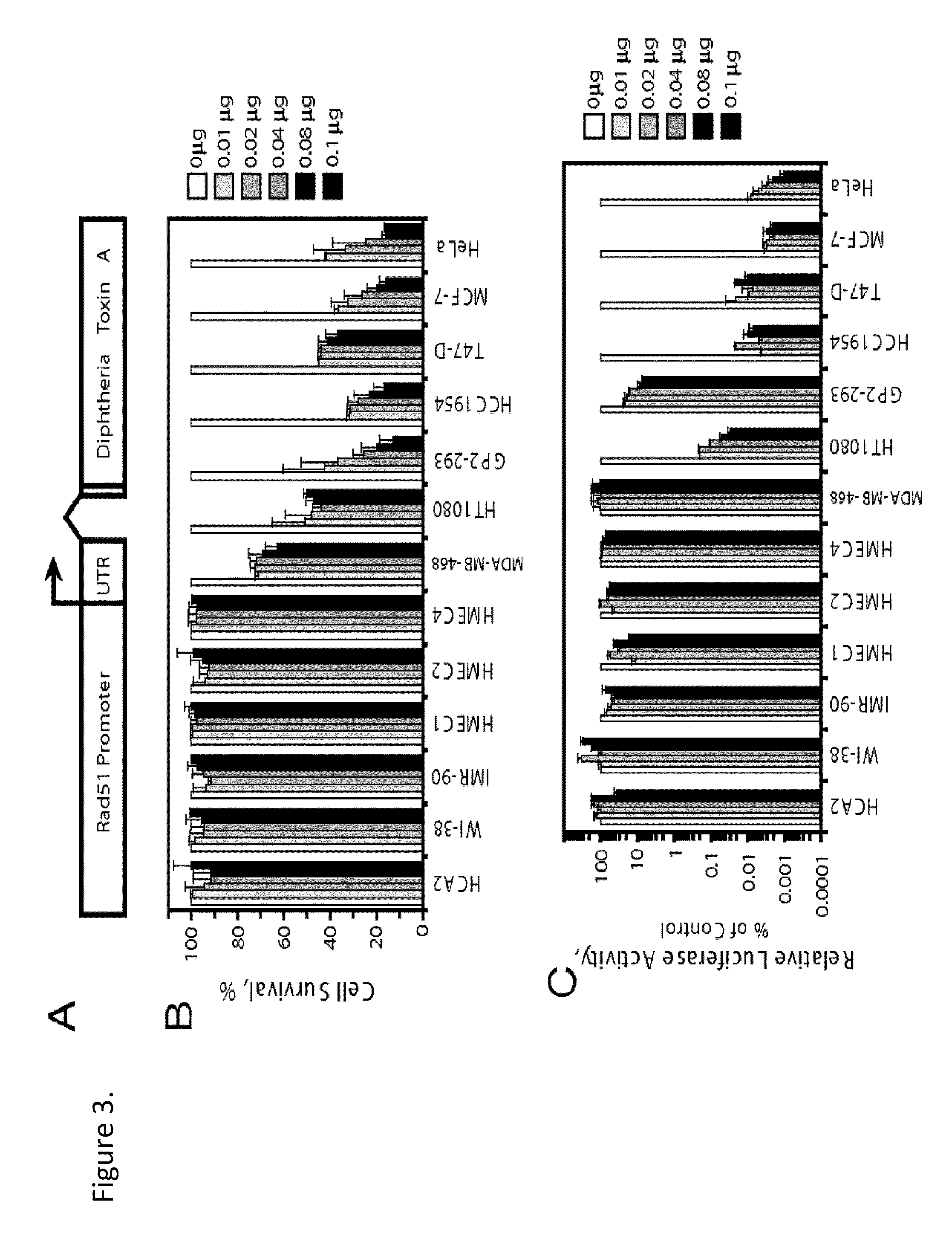Rad51 derived cancer cell specific promoters for targeted anti-cancer therapy
a cancer cell and promoter technology, applied in the field of cancer therapy, can solve the problems of narrow specificity, insufficient expression of therapeutic genes, toxicity to normal cells, etc., and achieve the effect of inhibiting tumor angiogenesis and reducing the mass of established tumors
- Summary
- Abstract
- Description
- Claims
- Application Information
AI Technical Summary
Problems solved by technology
Method used
Image
Examples
example 1
[0041]The materials and methods used in the invention include the following.
[0042]Cell culture—All cell lines were grown in monolayer on treated polystyrene cell culture dishes (Corning) at 37° C. in 3% O2, 5% CO2, and 97% relative humidity in HERA Cell 240 incubators. Human normal fibroblasts HCA2, IMR-90, and WI-38 used in this study were immortalized by constitutive expression of hTERT from integrated pBABE-Puro retrovirus. Immortalized human foreskin fibroblast line HCA2 and immortalized embryonic lung fibroblast IMR-90 and WI-38 were maintained in MEM (ATCC) supplemented with 15% fetal bovine serum; FBS, (Gibco) and 1× Pen / Strep (Gibco). Normal human mammary epithelial cells HMEC1, HMEC2 and HMEC4 (Clonetics) were maintained in MEBM (Lonza) and supplemented with MEGM SingleQuots (Lonza) which contains BPE, hEGF, insulin, hydrocortisone, and GA-1000. Human fibrosarcoma cell line HT1080 (ATCC), human embryonic kidney line GP2-293 (Clontech) and human cervical carcinoma line HeLa ...
example 2
[0054]This Example demonstrates that Rad51 protein and mRNA are elevated in cancer cells. In particular, we examined the endogenous levels of Rad51 protein and transcripts in a panel of human cancer and normal cell lines including: four breast cancer cell lines HCC-1954, MDA-MB-468, T47-D, and MCF7; cervical cancer cell line HeLa; fibrosarcoma line HT1080; transformed kidney cells GP2-293; three lines of normal fibroblasts HCA2, IMR-90, WI-38; and three normal human mammary epithelial cell lines HMEC1, HMEC2, and HMEC4.
[0055]Rad51 transcript was examined using quantitative RT-PCR (FIG. 1A, B) with primers to exons 1-3. The levels of Rad51 transcript were greater in cancer cells than in the normal cells (P=0.001, t-test). On average (by pooling the data for all of the non-cancerous cells versus the cancerous cells) cancer cells had 3.5-fold increase in the transcript levels. The cell line with the strongest Rad51 expression was T47-D, which had over a 12.2-fold increase when compared...
example 3
[0058]This Example demonstrates that Rad51 promoter activity is dramatically increased in cancer cells. To test whether the differential expression of Rad51 can be utilized for anticancer therapy we cloned the putative Rad51 regulatory region including 2,930 nucleotides upstream to 3,602 nucleotides downstream from the start of transcription (37, 39) (FIG. 1A) from total DNA isolated from normal human cells. We then cloned the GFP ORF under the control of the Rad51 promoter. The resulting construct, pRad51-GFP, contains the 2,930 bp of upstream regulatory sequences, the first noncoding exon of the Rad51, and the first 12 amino acids of the Rad51 ORF. pRad51-GFP, was transfected into HCA2, HT1080, and GP2-293 cells, and GFP expression was analyzed by flow cytometry. The two cancer cell lines, HT1080 and GP2-293 showed a large number of GFP+cells (67% in GP2-293 and 34% in HT1080). Surprisingly, no GFP+ cells were detectable in the normal human fibroblasts HCA2. This result suggested ...
PUM
| Property | Measurement | Unit |
|---|---|---|
| pH | aaaaa | aaaaa |
| volume | aaaaa | aaaaa |
| physical association | aaaaa | aaaaa |
Abstract
Description
Claims
Application Information
 Login to view more
Login to view more - R&D Engineer
- R&D Manager
- IP Professional
- Industry Leading Data Capabilities
- Powerful AI technology
- Patent DNA Extraction
Browse by: Latest US Patents, China's latest patents, Technical Efficacy Thesaurus, Application Domain, Technology Topic.
© 2024 PatSnap. All rights reserved.Legal|Privacy policy|Modern Slavery Act Transparency Statement|Sitemap



